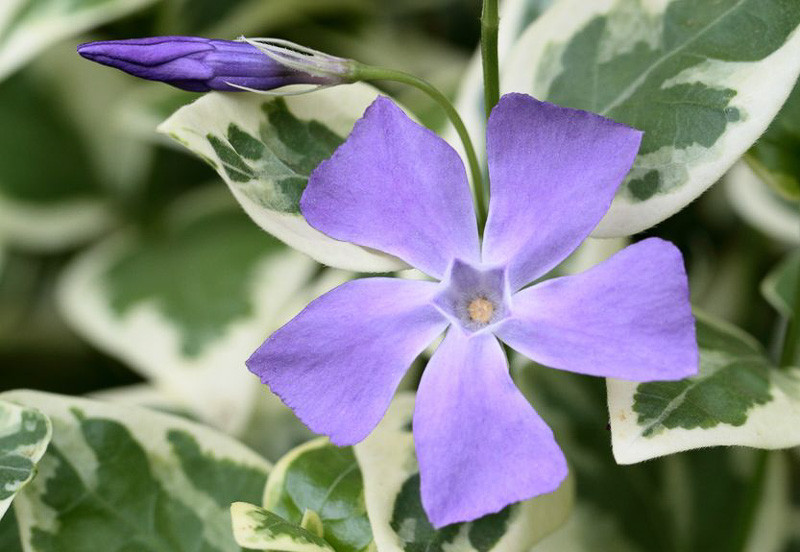Vinca
Vinca, also known as periwinkle, is a genus of flowering plants that includes approximately 12 species. Here are some interesting facts about vinca:
Habitat: Vinca is native to Europe and Asia but has been naturalized in many other parts of the world. It is often found growing in woodland areas, along hedgerows, and in other shaded or semi-shaded habitats.
Species: There are several species of periwinkle, including Vinca major and Vinca minor. Vinca major is a larger, more robust plant that is often used as a ground cover in large areas, while Vinca minor is a smaller plant that is often used in smaller garden beds and borders.
Appearance: Vinca is a low-growing, trailing plant that is popular as ground cover in gardens and landscapes. It has glossy, dark green leaves and produces small, star-shaped flowers in shades of purple, blue, white, or pink.
Medicinal uses: Vinca contains alkaloids that have been used in traditional medicine to treat a variety of conditions, including high blood pressure, diabetes, and eye problems. These alkaloids have also been found to have anti-cancer properties and are used in chemotherapy treatments.
Growing conditions: Vinca is a hardy plant that is well-suited to a variety of growing conditions. It prefers partial to full shade and well-drained soil, but can also tolerate full sun in cooler climates. It is low-maintenance, making it an ideal choice for gardeners who are looking for a low-maintenance ground cover.
Toxicity: While vinca is considered safe for medicinal use when used in appropriate doses, the plant is toxic if ingested in large quantities. It contains alkaloids that can cause vomiting, diarrhea, and other symptoms if consumed in large amounts.
Deer and rabbits tend to avoid eating vinca, as it contains alkaloids that make it unpalatable to them.
Overall, periwinkle is a versatile and attractive plant that is well-suited to a variety of gardening applications. Its hardiness, low-maintenance requirements, and colorful flowers make it a popular choice for ground cover, borders, and rock gardens, while its medicinal properties have made it a valuable plant for centuries.

